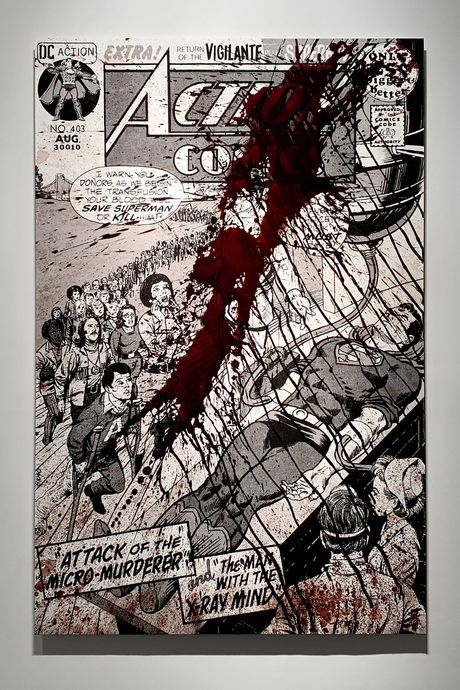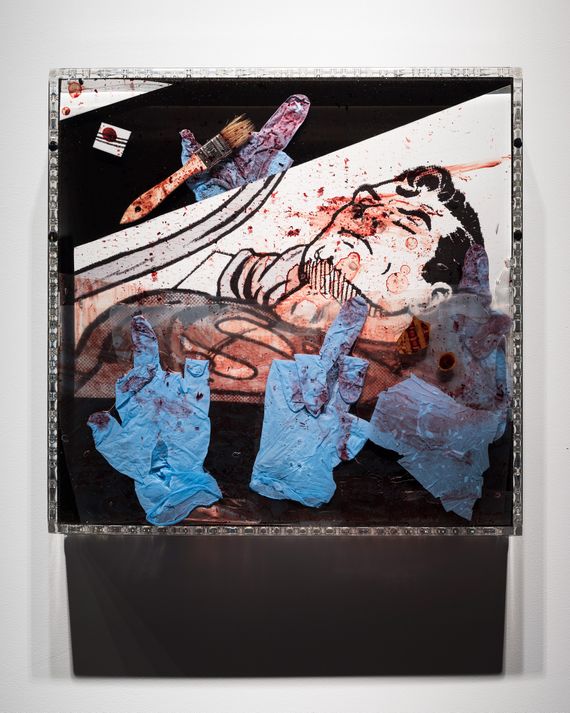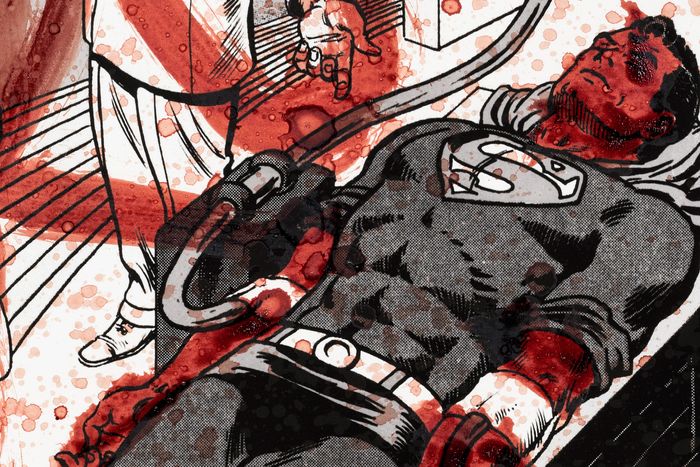
One of the ways that people who have survived COVID-19 have been able to help those who are having a rougher time with it is through convalescent-plasma donation. Antibody-filled blood is in dire need and is saving lives. But just don’t try to help if you’re a man who has sex with men: The U.S. Food and Drug Administration’s policy essentially refuses blood donations from gay and bisexual men unless they’ve been celibate for three months.
Artist Jordan Eagles confronts this refusal in a work titled Can You Save Superman? on the Leslie-Lohman Museum of Art’s new website. The project is based on a 1971 Superman comic book, Attack of the Micro-Murderer, in which all the citizens of Metropolis are called on to save their superhero, who had contracted a super-virus, by donating blood. Eagles takes the comic book’s cover and sprays it with the blood of a gay man on PrEP, a daily pre-exposure drug to prevent HIV.
Eagles has been working with blood as an artistic medium since the late 1990s. In 2015, when the FDA first eased its lifetime ban on queer-blood donations to a one-year celibacy requirement (lowered to three months because of the pandemic, in April), Eagles made Blood Mirror (2014–16) — an actual mirror that showed the reflection of the onlooker through the blood of 59 gay, bi, and trans donors. Though some groups lauded the step in the right direction, to Eagles, the new policy “felt even more discriminatory … in effect saying, ‘Yes, you can donate blood, just as long as you don’t do what makes you gay.’” The concept Eagles calls “blood equality” permeates his work today.
Using this blood for art-making instead of transfusions or treatments, Eagles says, is an utter waste. “This is blood that could have been used for lifesaving purposes if the government’s policy of blood donation was fair,” Eagles told the Cut in 2018 in a video interview about Blood Mirror. “My whole body of work addresses blood as a life force.”
Part of the museum’s Pride Month programming, the show opens June 10, just ahead of World Blood Donor Day. Here, a preview of Can You Save Superman?
In American Carnage 6/14 (2018), Eagles has scanned and blown up the cover image to make a large-form black-and-white print. Blood pools most where it first struck the Dibond aluminum panel, then rolls in an unnatural diagonal toward the ailing Superman. The doctor, almost entirely obscured with blood, says in a speech bubble to a waiting crowd that stretches into the distance, “I warn you donors, as we begin the transfusion, your blood will save Superman or kill him!”
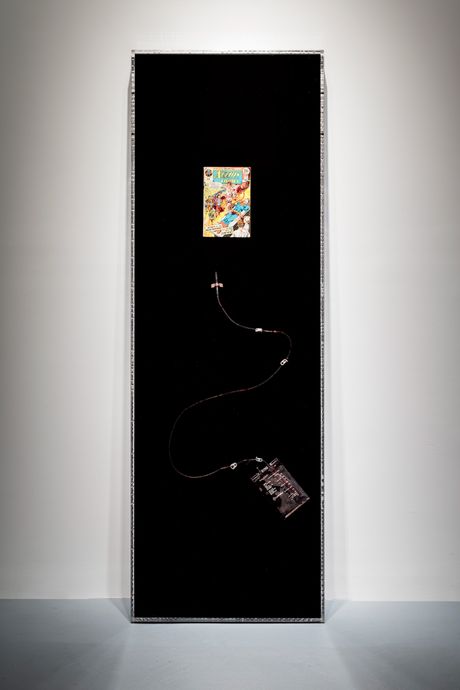
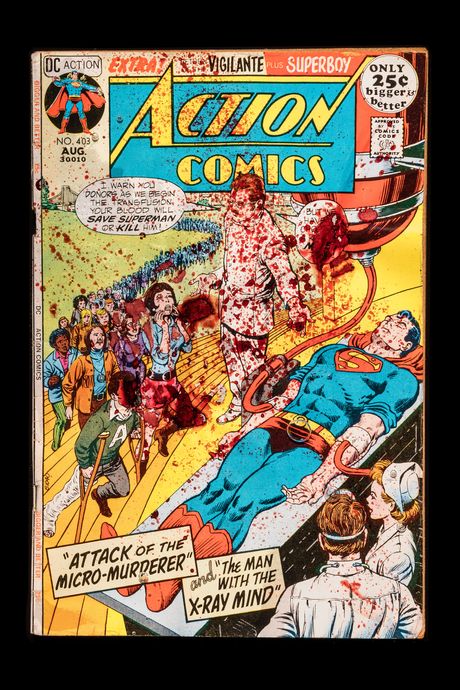
In Untitled (2018), against the black fabric of a delicate display, there’s an original issue of the 1971 comic book itself splattered with blood. Recoiling from the comic book, a needle. IV tubing leads down to a blood bag, mostly full.
Will You Save Superman? (2018) fixates on Superman’s head leaning back on an operating table. His cape is his pillow. With his eyes closed and brow knit, it’s clear he is unable to save himself. Surrounding his portrait, latex medical gloves with all but their middle fingers turned down crowd the work. It’s “unusable” blood; they’re hands that won’t help. We’re letting Superman die.


